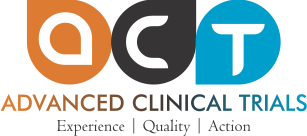This phase is designed to assess the effectiveness of the new intervention and, thereby, its value in clinical practice. The percentage of Phase II trials that proceed to Phase III, as of 2008, is 18%.[5] Phase III studies are randomized controlled multicenter trials on large patient groups (300–3,000 or more depending upon the disease/medical condition studied) and are aimed at being the definitive assessment of how effective the drug is, in comparison with current ‘gold standard’ treatment. Because of their size and comparatively long duration, Phase III trials are the most expensive, time-consuming and difficult trials to design and run, especially in therapies for chronic medical conditions. Phase III trials of chronic conditions or diseases often have a short follow-up period for evaluation, relative to the period of time the intervention might be used in practice. This is sometimes called the “pre-marketing phase” because it actually measures consumer response to the drug.
It is common practice that certain Phase III trials will continue while the regulatory submission is pending at the appropriate regulatory agency. This allows patients to continue to receive possibly lifesaving drugs until the drug can be obtained by purchase. Other reasons for performing trials at this stage include attempts by the sponsor at “label expansion” (to show the drug works for additional types of patients/diseases beyond the original use for which the drug was approved for marketing), to obtain additional safety data, or to support marketing claims for the drug. Studies in this phase are by some companies categorized as “Phase IIIB studies.”
While not required in all cases, it is typically expected that there be at least two successful Phase III trials, demonstrating a drug’s safety and efficacy, in order to obtain approval from the appropriate regulatory agencies such as FDA (USA), or the EMA (European Union),
Once a drug has proved satisfactory after Phase III trials, the trial results are usually combined into a large document containing a comprehensive description of the methods and results of human and animal studies, manufacturing procedures, formulation details, and shelf life. This collection of information makes up the “regulatory submission” that is provided for review to the appropriate regulatory authorities[8] in different countries. They will review the submission, and, it is hoped, give the sponsor approval to market the drug.
Most drugs undergoing Phase III clinical trials can be marketed under FDA norms with proper recommendations and guidelines through a New Drug Application (NDA) containing all manufacturing, pre-clinical, and clinical data. In case of any adverse effects being reported anywhere, the drugs need to be recalled immediately from the market. While most pharmaceutical companies refrain from this practice, it is not abnormal to see many drugs undergoing Phase III clinical trials in the market.
Your progress in to the PhaseIIb and III will always have surprises and challenges. That’s when our advance infrastructure expertise will help you the most. We have established netwroks, resources, smart working practices, strategy and logistics to take your journey in in a fast track route minimizing risks, costs and delays.

